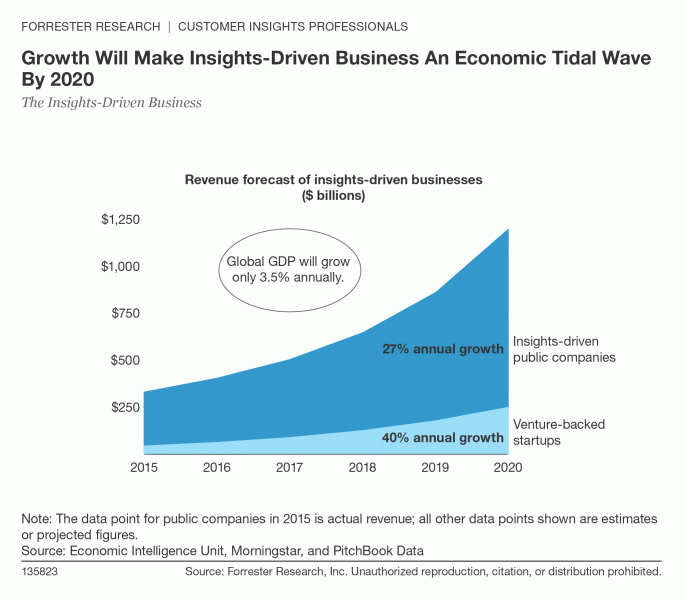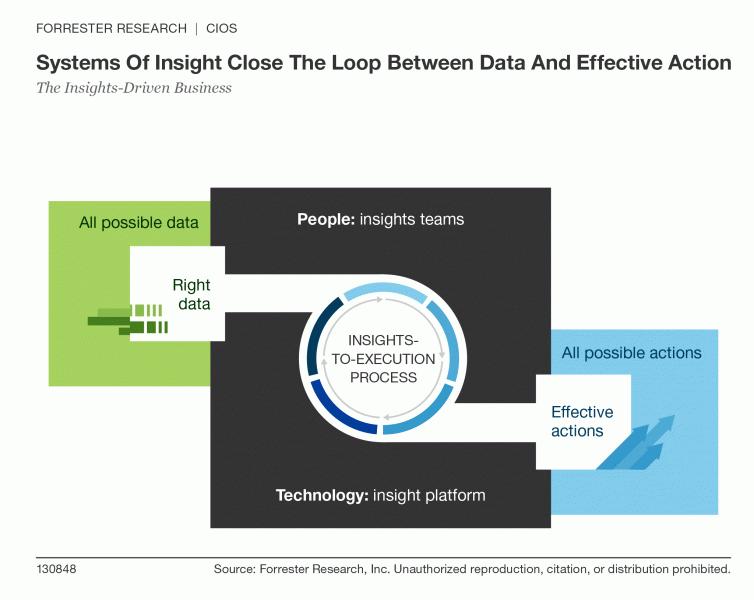Insights-Driven Businesses Will Make $1.2 Trillion In 2020. Wanna Join Them?
You can't win, serve, and retain powerful customers without being insights-driven. It's one of the principles of customer obsession: customer-led, insights-driven, fast, and connected. So what does it mean to be insights-driven? We think we know based on conversations with over 50 companies over three years.
We have identified 40 public companies and a horde of venture-backed startups that work in a fundamentally different way: They harness and apply data at every opportunity to differentiate their products and customer experiences. That makes them faster and fleeter than you. In fact, using data from PitchBook and Morningstar, we forecast that, collectively, these insights-driven businesses will make $1.2 trillion dollars in 2020 (see the first figure).
What does it mean to be insights-driven? It's easiest to see by example. What if you could:
- Optimize the driving experience by mining car performance data for insights to continuously improve car software? Tesla does.
- Improve student loan re-financing prices and risk by finding insights in a borrower's credit card transaction history, college, and grades? Earnest does.
- Win a football championship by gathering data and using insights to improve recruiting, training, and half-time pep talks. FC Midtjylland does.
- Earn the best on-time arrival of any major airline by measuring when the airplane door closes — and everything leading up to it. Alaska Airlines does.
To learn how these and many other insights-driven business are built and operate, see the new report that Brian Hopkins, James McCormick, and I wrote: The Insights-Driven Business. The capability is just now opening up to efficiently harness insights in every aspect of business. One key is a new operating model we call systems of insight: insights team, an insights-to-execution process, and an insight platform (see the second figure). Where can you harness and apply insights in your business?


